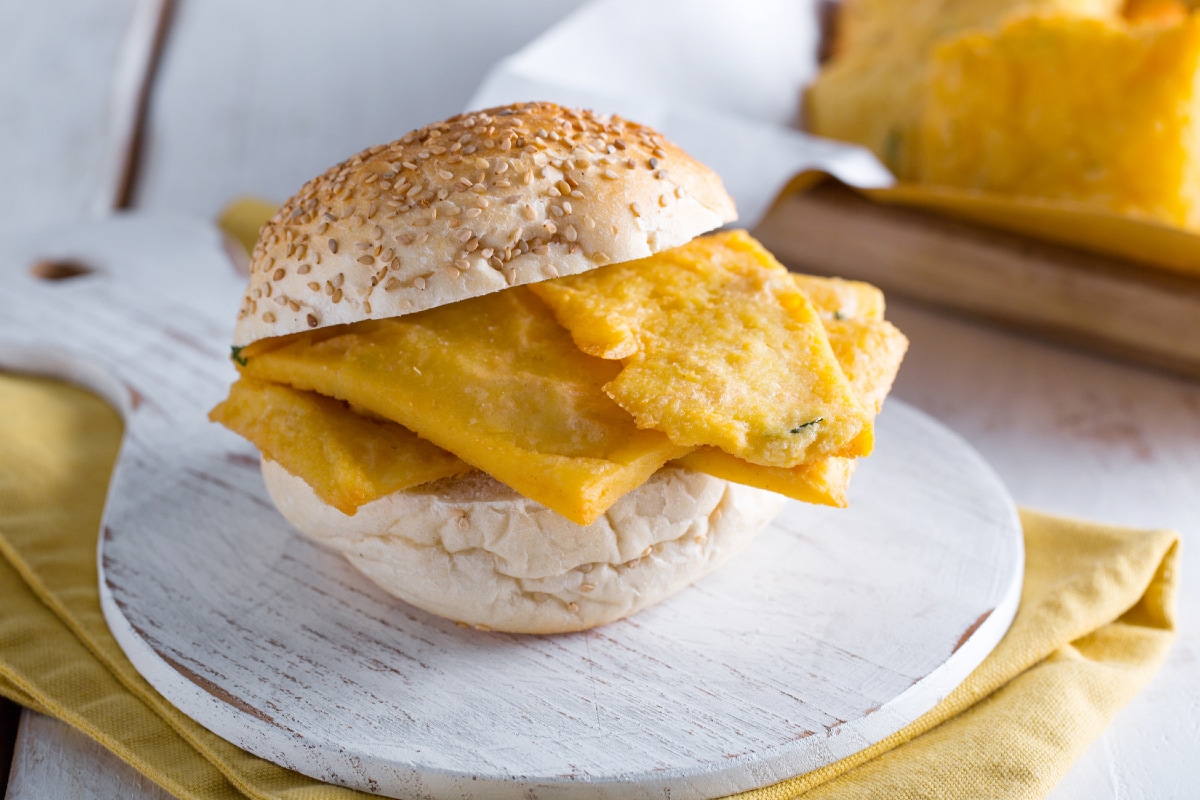Panissa (Ligurian Chickpea Fritters)
- Easy
- 1 h 50 min
- Kcal 711

Pane e panelle (chickpea flour fritters in bread rolls), like spitini palermitani (small breaded, fried ragu sandwiches), arancine (breaded, fried balls of rice with various fillings), and ravazzate (brioche rolls stuff with ragu) are a typical street food of Palermo. The tasty fritters are served in a soft roll, sometimes with the potato croquettes known locally as cazzilli, too. You can get them from stands or rosticcerie, specialist shops selling roast meat and other prepared food, one of which is the Antica Panelleria da Nino. Francesco Lelio, the shop’s owner, is going to show us both the version you can make at home, as well as the traditional one where the panelle are shaped on small carved wooden boards before being fried. Once ready, the panelle almost looked like little fish. People who couldn’t afford fish would fry the panelle in the same oil used for frying fish, so they could give their family something that would at least recall the taste of fish! Find out how to make this classic of Palermo’s street food at home, following our tips and instructions, and then choose whether to eat them on their own or five at a time in a soft bread roll!

To make the panelle, first pour the chickpea flour into a large pot. Add the salt 1 and stir together while still dry. Now pour in nearly all the water slowly, saving the final part for the next step 2, and start to mix with a whisk 3 to prevent lumps from forming. Mix from the center outwards.

Slowly pour in the remaining water 4, whisking continuously 5. The consistency will be fairly liquid at this point, but if you lift up a spoonful of the mixture, it should drizzle down, without being runny. Take the pot off the stove for the time it takes to chop the parsley roughly: The leaves should still be nearly intact 6.

Put the pot back on the heat and start stirring again, without stopping 7. Once the flour starts to thicken, this is when the cooking really begins, so you’ll need to stir more vigorously. It will take around 30 minutes to get the right consistency. At that point, add the parsley 8 and stir again to distribute it evenly 9.

Once you’ve got an even mixture, turn off the heat 10. Take a bit of the mixture and, using a spatula, spread it onto a marble work surface until it’s a little less than ¼ inch (4-5 mm) thick 11. Let it cool slightly to make things easier. Trim the edges using a knife or dough cutter 12.

Try to get an exact rectangle around 2 inches (5 cm) tall 13. Then, cut this into smaller rectangles around 4 inches (10 cm) long 14. Repeat this step, spreading more of the mixture next to it and creating other panelle 15. The quantities in this recipe will give you around 40 panelle.

Heat plenty of oil in a pot. Immerse a few panelle at a time 16 and cook them until they’re golden, turning them on both sides. It will take around 3 minutes. This will create the classic coating, making them crispy on the outside and soft on the inside. Drain them 17 and transfer to paper towel 18.

Continue cooking this way 19. Once all the panelle have been fried, you can choose whether to eat them on their own or use them to fill the bread rolls 20. In this case, we recommend using 5 panelle per roll. Whatever you choose, we recommend eating them while they’re still piping hot 21!